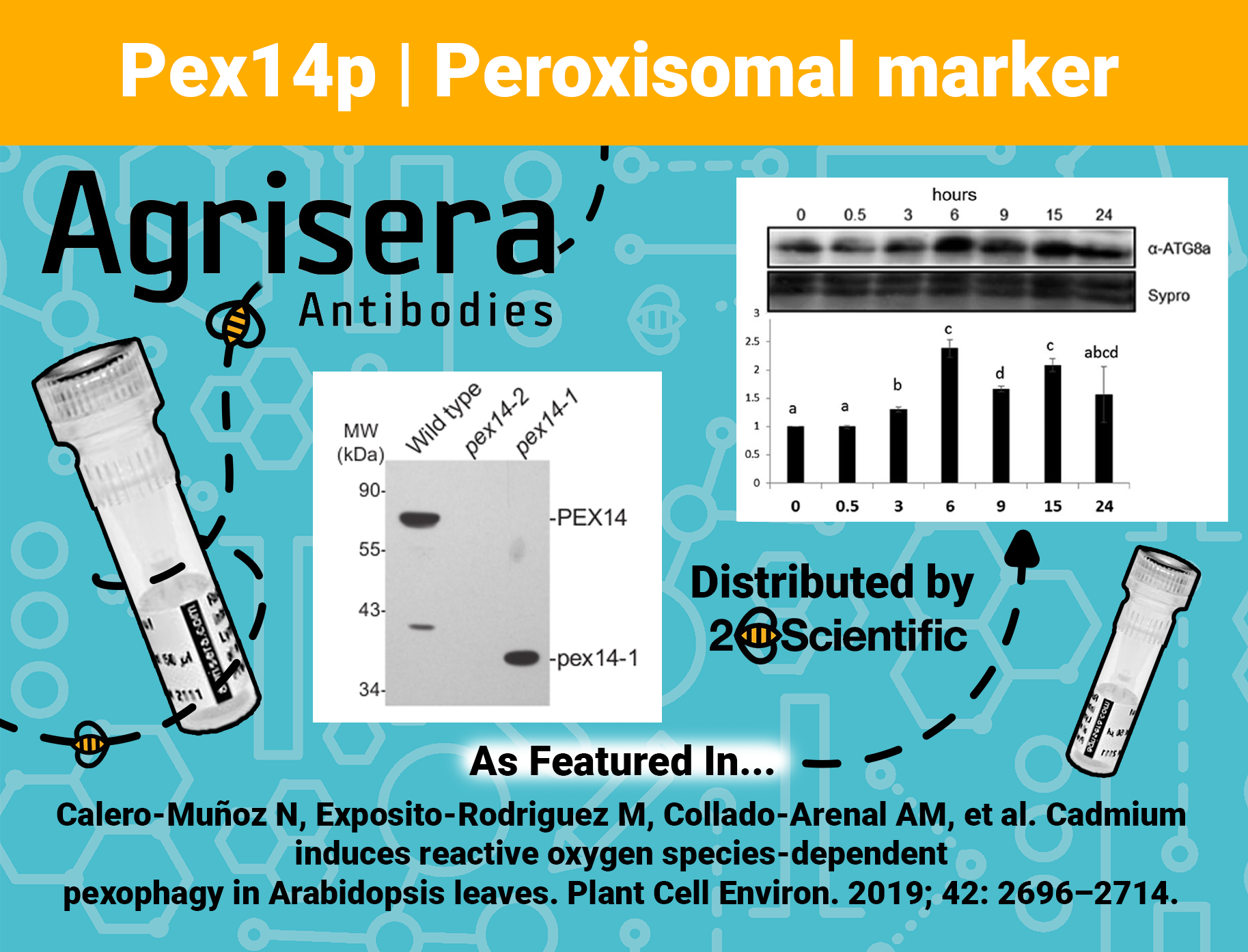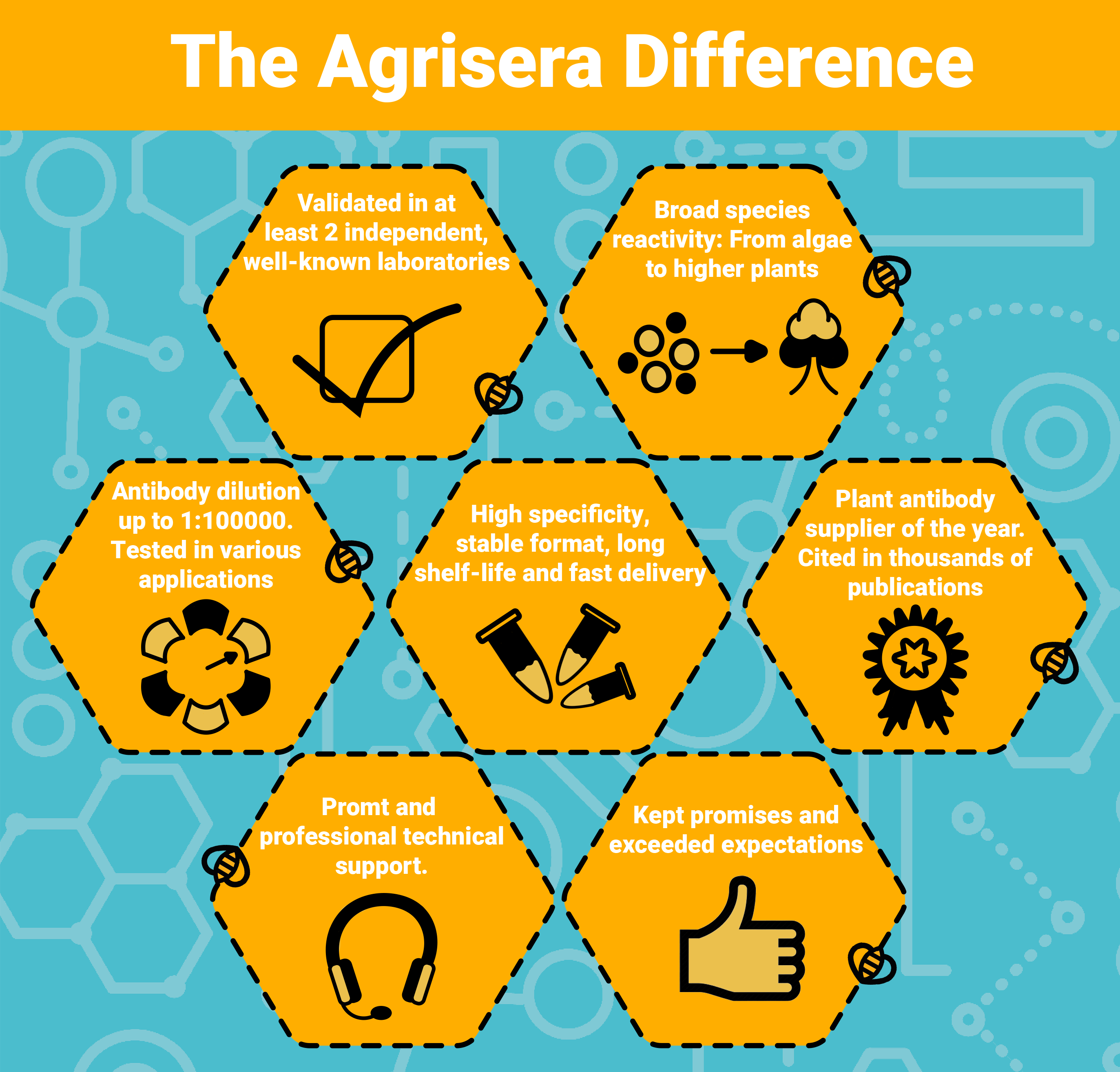Agrisera Publication - Cadmium induces reactive oxygen species‐dependent pexophagy in Arabidopsis leaves
Calero-Muñoz N, Exposito-Rodriguez M, Collado-Arenal AM, et al. Cadmium induces reactive oxygen species-dependent pexophagy in Arabidopsis leaves. Plant Cell Environ. 2019; 42: 2696-2714.
This study delves into the intricate mechanisms of autophagy in Arabidopsis plants when exposed to cadmium stress, often from fertilisers, pesticides, or industrial waste. Autophagy is the cellular process that ensures the degradation and recycling of damaged cellular components, thus maintaining cellular homeostasis. The researchers employed a range of sophisticated techniques, including gene expression analysis, Western blotting, protease activity assays, and confocal microscopy utilising Agrisera’s reagents to ensure accurate results.
Western Blot Analysis and Agrisera Products

For protein level detection, the study employed Western blot analysis, a technique critical for identifying specific proteins in a sample. They used the anti-PEX14 antibody from Agrisera to detect the PEX14 protein, which is fundamental to peroxisome function. The antibody was diluted 1:10,000 in blocking buffer and incubated with the membrane containing separated proteins. Following this, the membrane was treated with a secondary antibody, goat anti-rabbit IgG conjugated with horseradish peroxidase, also from Agrisera. This secondary antibody enabled the detection of the primary antibody bound to the PEX14 protein. The use of these high-quality Agrisera antibodies was crucial as they provided high specificity and sensitivity, ensuring accurate detection of PEX14.
Importance of Agrisera Products

The Agrisera antibodies used in this study, specifically the anti-PEX14 antibody and the secondary goat anti-rabbit IgG antibody, were instrumental in obtaining reliable and precise results. These products are known for their high specificity and sensitivity, which are vital for accurate protein detection in Western blot analyses. For researchers, using such high-quality antibodies ensures that the detected signals are true representations of the target proteins, reducing the likelihood of non-specific binding and background noise. In this study, the anti-PEX14 antibody allowed for the effective detection of the PEX14 protein, a key player in peroxisomal function, thereby providing valuable insights into the autophagic response to cadmium stress.
Gene Expression Analysis
The researchers used quantitative real-time PCR to measure the expression levels of autophagy-related genes in Arabidopsis under cadmium stress. They found a significant upregulation of these genes, indicating an active autophagic response.
Protease Activity Assays
Protease activity assays measured the activity of specific autophagy-related proteases. By quantifying substrate hydrolysis, researchers identified changes in protease activity in response to cadmium stress, highlighting how proteolytic activity is modulated during autophagy.
Confocal Microscopy
Confocal microscopy visualised the localisation of autophagy-related proteins and peroxisomes using fluorescent markers. This allowed researchers to observe changes in protein and organelle localisation and abundance under cadmium stress, providing insights into cellular dynamics during stress responses.
Conclusion
Overall, this study provides substantial evidence supporting the involvement of autophagy in the response to cadmium stress in Arabidopsis plants. By demonstrating changes in gene expression, protein levels, protease activity, and organelle localisation, the researchers have contributed to a deeper understanding of the molecular mechanisms underlying plant stress responses. The use of Agrisera products, particularly in the detection of PEX14 protein, underscores the importance of high-quality reagents in achieving accurate and reproducible scientific results.